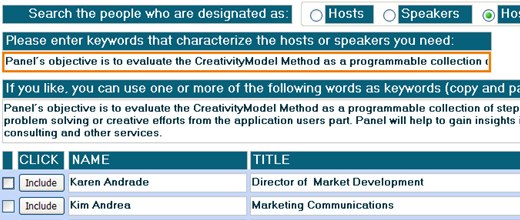Website sections:
- Services Provided
- IT Project Management
- Application Development
- Creativity Management
- Previous Work Experience
- Site Map
- Contact Information
Current section's content:
- Overview of Current Focus and Previous Work Experience
- Creativity Management Method Development Project
- Previous Work
- Overview of the Previous Work
- Achieve More with Less Effort
- Market Research Tools
- Marketing, Prospecting and Sales Tools
- Resource Scheduling Tools
- Event Planning Tools
- Project Planning, Development and Management Tools
- From Search Functionalities to Multi-Functional Report Centers
- Reports
- Data Entry, Uploading and Filtering Tools
- Application Navigation and Usage Assistance Tools and Features
- Artistic and Entertaining Nuances: Brighten the Moments!

Achieve More with Less Effort
Relational database applications can increase user efficiency in different ways.
Database applications can help the users to be both more efficient, productive and even more creative - as problem solvers, for example. These application qualities make the database and its usage better investments of development funds and users time.
Building a business, organizational, or research processes into an application can increase user efficiency.
Integrating company's data flows through a computer application and using the results for sales or marketing purposes can be very effective.
Report Center type of data mining tools can provide insight into trends and opportunities, and the same tools can be used for very flexible reporting and emailing options based on the selected data sets. These tools can make a lot of customized information available to the users. The users can, effectively, run their own queries in countless ways, review the generated information and then use it further as needed - for example, put it to Word and send out mail merge letters via email automatically, or transfer the data into Excel and analyze it further there.
Variety of scheduling and planning tools can make much easier, faster and productive work, which is often done using Word files or Excel.
Further, application navigation features and Users Guide type of tools also increase application usage efficiency. Users Guide can be set up so, that application users can easily update its content.
Additionally, an application can contain features that check the user's work, and notify the user if he or she may be making a mistake.
Finally, application's aesthetic qualities can increase user satisfaction that in turn often translates into higher productivity.
These development aspects are further explored in the subsections below.

